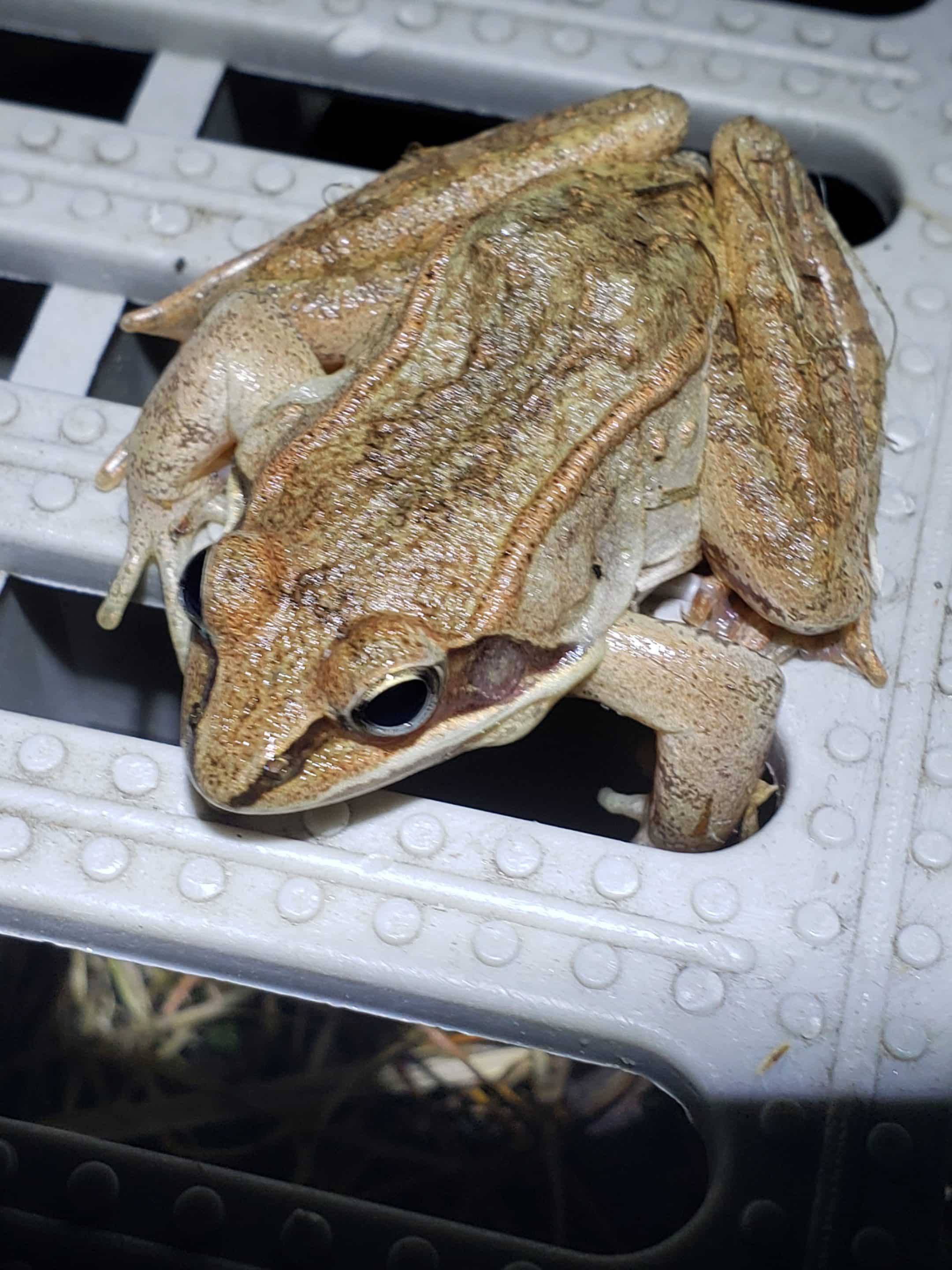A wood frog, just one of many examples of the amphibians that will be crossing a road near you this spring.
Photo credit: Sarah LaValley, assistant director of the Northampton Office of Planning and Sustainability
NORTHAMPTON — With the change of seasons comes longer days, warmer weather and spring amphibian migration season.
Through a notice released by the city, a reminder was given to the Northampton public that this time of year sees amphibians emerging from their winter retreats to begin migrating to breeding sites or disperse to new areas.
The mating chirp of the spring peeper is one of the ways Northampton Office of Planning and Sustainability Assistant Director Sarah LaValley knows winter is officially over and spring is officially here.
“People have probably started to hear spring peepers at night. For me, that’s one of the most exciting parts of spring,” LaValley said. “Spring is really here when you can really hear the peepers.”
According to MassWildlife, amphibians are signaled by the spring rain that it is time to emerge from their winter retreat and it is time to migrate to breeding sites or find a new area. This leads amphibians with the daunting task of having to crossroads to reach their new destinations.
Spotted salamanders, wood frogs, blue-spotted salamanders, Jefferson salamanders, American toads, spring peepers, four-toed salamanders, northern leopard frogs and eastern red-backed salamanders are frequently encountered on roads during early spring rains. With little to no snow cover and the ground thawed in many areas, the state expects migrations in milder, lower-elevation parts of the state to commence with the next warm, rainy night.
More information on amphibian migration in the state can be found at tinyurl.com/bjm5e6wh.
The Conservation Commission and Office of Planning and Sustainability have worked to protect vernal pools, wetlands and surrounding areas that provide critical breeding habitat for many vertebrate and invertebrate wildlife species. According to LaValley, there are 98 certified vernal pools in Northampton.
“That includes a lot of breeding and non-breeding habitats for amphibians and reptiles. Turtles, salamanders, frogs. This time of year, is when people who may not get out in the woods a lot are most likely to encounter them,” LaValley added. “Our little amphibian friends are making their way from the places where they hibernate to vernal pools where they do their breeding activity and then back again to the larger wetland areas.”
LaValley said anecdotally, North Farms Road is a prime example of a location in the city that can expect the migration process to take place at. With wetlands on both sides, many amphibians emerge and cross over for the mating process.
LaValley added that Cardinal Way and Old Wilson Road also feature a similar set up as both sides of the roads contain wetlands and vernal pools. Signage is expected to be posted in these areas to raise awareness of potential amphibian crossings.
She said the Conservation Commission and Office of Planning and Sustainability have worked hard to protect these areas and ecosystems over the years to make sure no habitats are lost over time.
“Wetlands for much of the history of New England have been considered a nuisance. You know, ‘we can’t build anything here.’ If it’s wet, we have to drain it and make it so we can utilize it better,” LaValley said. “But over time we’ve come to recognize that wetlands are really critical for amphibians, reptiles, ducks and other species. And we really need to protect them for water quality and a lot of other reasons.”
With that being said, many of these salamanders and frogs will need to cross roadways to get to their destinations. These amphibians are small and move mostly after dark, so LaValley and the city are asking the public to be cautious when driving on rainy nights this spring.
“People might not be aware of the life cycle of an amphibian or why they’re out on roads, but they’re definitely likely to encounter them this time of year on rainy nights,” LaValley said. “So, we just wanted to get the word out that they are out there and to drive slowly and to be aware.”



